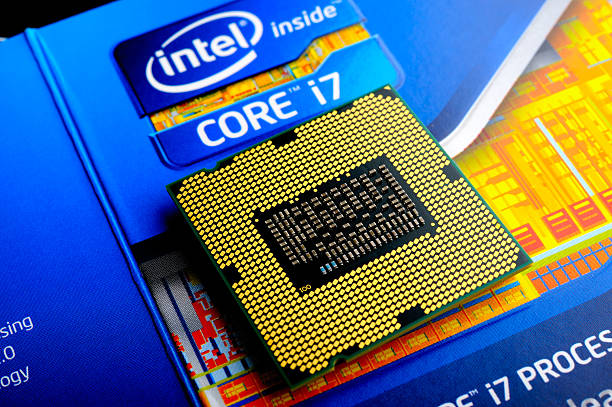Achieving Optimal Overclock Settings for the EP45-DS3L with E5450
Introduction
Overclocking is a popular method for maximizing performance in PC systems, especially for enthusiasts looking to get the most out of their hardware. The EP45-DS3L motherboard paired with the Intel E5450 CPU presents a solid platform for overclocking due to its features and capabilities. This article will guide you through the best practices, settings, and tips to achieve maximum overclock for your E5450 on the EP45-DS3L motherboard.
Understanding Overclocking
Overclocking involves increasing the clock speed of a CPU beyond its factory settings to improve performance. This process can lead to better performance in applications such as gaming, video editing, and multitasking. However, overclocking requires careful tuning and monitoring to avoid potential damage due to overheating or instability.
Key Considerations Before Overclocking
- Cooling Solutions: Ensure you have adequate cooling, as overclocking generates additional heat. An aftermarket CPU cooler or enhanced case ventilation is advisable.
- Power Supply: Ensure your power supply can handle the increased power demand when overclocking.
- Stability Testing: Prepare for extensive testing to ensure your system remains stable after adjustments.
Overclocking Steps for the EP45-DS3L and E5450
Follow these steps to achieve optimal overclock settings:
Step 1: Update Your BIOS
Ensure your motherboard’s BIOS is updated to the latest version. This can improve compatibility and provide better overclocking features. You can usually find updates on the manufacturer’s website.
Step 2: Access BIOS Settings
- Restart your computer and enter the BIOS setup by pressing the DEL key (or F2, depending on your motherboard) during boot.
- Navigate to the MIT (Motherboard Intelligent Tweaker) section in the BIOS.
Step 3: Adjust Base Clock (BCLK)
- Find the CPU Clock Ratio setting. Set it to 6x initially to keep things stable while you adjust the BCLK.
- Increase the BCLK incrementally. Start at 400 MHz. This setting will give you an effective CPU speed of 2400 MHz (6 x 400).
Step 4: Configure CPU Voltage
- Increase the CPU Voltage (Vcore) slightly to improve stability as you overclock. Start with 1.25V and monitor temperatures.
- Test with small increments (e.g., 0.025V) and avoid exceeding 1.5V to prevent damage.
Step 5: Adjust Memory Settings
- Set the Memory Multiplier to match your RAM specifications. For example, if your RAM is rated for 800 MHz, set the multiplier accordingly.
- Ensure your memory voltage is within the manufacturer’s specifications, typically around 1.8V to 2.1V for overclocked RAM.
Step 6: Set Northbridge Voltage (if necessary)
- Increase the Northbridge voltage (MCH) slightly if you experience instability. Start with a small increment (e.g., 1.20V).
Step 7: Save and Exit BIOS
- Save your settings and exit the BIOS. Allow your system to boot into the operating system.
Step 8: Stability Testing
Once your system boots:
- Use stability testing software like Prime95, OCCT, or AIDA64 to stress test your CPU.
- Monitor temperatures with software like HWMonitor or Core Temp. Aim to keep temperatures under 70°C during stress tests.
- Run tests for at least 1-2 hours. If your system crashes or exhibits instability, return to the BIOS and make necessary adjustments.
Finding the Max Overclock Settings
Repeat the process of adjusting BCLK and voltage until you reach the maximum stable settings. Here are some general guidelines:
- Max BCLK: Aim for a maximum BCLK of around 450 MHz, which should yield approximately 2700 MHz (6 x 450).
- Vcore: Monitor closely. You may need to adjust it up to 1.45V, but always ensure the temperatures are safe.
Additional Overclocking Tips
- Incremental Changes: Make small adjustments to BCLK and voltage to avoid drastic instability.
- Thermal Paste: Consider reapplying thermal paste on your CPU if it has been a while since it was last replaced.
- RAM Settings: If using high-performance RAM, you can adjust timings and frequencies for additional performance.
Conclusion
Achieving maximum overclock settings for the EP45-DS3L motherboard and E5450 CPU can significantly enhance your system’s performance. By carefully following the outlined steps and continuously monitoring stability and temperatures, you can unlock the full potential of your hardware.
Frequently Asked Questions
- What is the maximum safe voltage for the E5450 CPU when overclocking?
The safe voltage range is typically between 1.25V and 1.45V. Avoid exceeding 1.5V to prevent potential damage. - How do I know if my overclock is stable?
Use stress-testing software to run benchmarks. If the system crashes or shows errors during tests, it indicates instability. - What temperatures are safe during overclocking?
Aim to keep temperatures below 70°C under load. Temperatures above this can lead to throttling or damage. - Can I overclock my E5450 using stock cooling?
While it’s possible, using stock cooling is not recommended for significant overclocking due to insufficient heat dissipation. - What tools do I need for overclocking?
You’ll need a reliable BIOS interface, stress-testing software (like Prime95), and temperature monitoring tools (like HWMonitor). - How can I reset BIOS settings if something goes wrong?
You can reset the BIOS by selecting the “Load Optimized Defaults” option in the BIOS setup or by removing the CMOS battery for a few minutes.
7. Will overclocking void my warranty?
Yes, overclocking can void warranties for both the CPU and motherboard, so proceed with caution and at your own risk.




